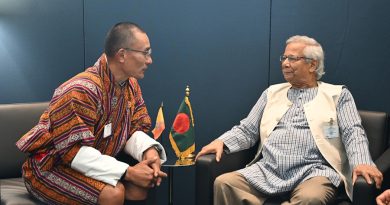The re-emergence of US President Donald J. Trump on the global trade stage has revived a controversial concept in trade policy: the reciprocal tariff. Under this approach, Washington matches the import duties imposed by its trading partners—”you charge us, we charge you”—circumventing the World Trade Organization’s (WTO) traditional role as the arbiter of global trade rules.
While the move has unsettled WTO advocates and economists who favour multilateral frameworks, trade analysts believe the changing tariff dynamics could create unexpected opportunities for countries like Bangladesh, especially in labour-intensive manufacturing sectors.
Why Bangladesh May Benefit
Bangladesh currently enjoys duty-free access to the US market under its Generalized System of Preferences (GSP) for select products, although apparel—the country’s main export—remains excluded from the programme. However, if reciprocal tariffs push up costs for key competitors such as China, Vietnam, and India, Bangladeshi goods could become more competitive in price-sensitive segments of the US market.
“Any increase in tariffs on large-scale suppliers could redirect sourcing to alternative countries with stable costs, and Bangladesh is well-positioned in several categories,” said a senior official at the Export Promotion Bureau (EPB).
The China Factor
China remains the largest supplier of apparel, electronics, and consumer goods to the United States. If reciprocal tariffs further penalise Chinese imports, buyers may accelerate their “China plus one” sourcing strategy—diversifying production to other countries to reduce dependency. Bangladesh, with its established garment sector and improving infrastructure, could capture part of this shift.
Potential Gains Beyond Garments
While apparel remains the backbone of Bangladesh’s export economy, emerging sectors such as leather goods, jute products, pharmaceuticals, and frozen foods could also see increased demand if tariffs disadvantage competing exporters. Industry insiders note that US buyers are increasingly looking for cost-competitive suppliers with reliable delivery capabilities—areas where Bangladesh has steadily improved.
Risks and Caveats
Experts caution, however, that any benefit will depend on Bangladesh’s ability to maintain competitive pricing despite rising input costs and logistical challenges. The absence of full GSP privileges for apparel also means that potential gains may be limited unless policy adjustments or bilateral trade deals are pursued.
Furthermore, reciprocal tariffs could provoke broader trade tensions, potentially slowing global demand and hurting export-dependent economies.
Strategic Response Needed
Industry bodies, including the Bangladesh Garment Manufacturers and Exporters Association (BGMEA), have urged the government to engage in active trade diplomacy with Washington to secure more favourable access terms. Proposals include expanding GSP coverage, negotiating lower tariffs on key goods, and strengthening compliance with labour and environmental standards to meet US buyers’ requirements.
“The shifting trade landscape is both a challenge and an opportunity,” said a Dhaka-based trade economist. “If Bangladesh acts quickly—through policy alignment, sector diversification, and infrastructure improvement—it can turn the current geopolitical uncertainty into an export growth driver.”






